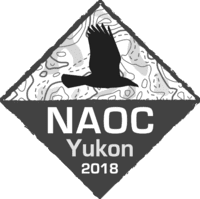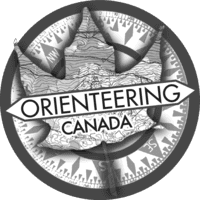There are so many courses: Which course is for me?
At championship events, like the Nationals and the North Americans, there are “age” classes and “open” classes. Every age class is assigned to a certain course, following the standards for course length and difficulty set by Orienteering Canada. This is why there are so many courses to choose from — 11 in the case of the Middle and Long events; and 6 in the case of the Sprint event.
If you enter an age class, you will be competing with other people of the same gender and age bracket. However, you do not have to enter your age class — most courses offer an open (non-competitive) class as well.
Roughly-speaking, the course difficulties relate to the Wednesday night B-meets as follows:
| B-meet | Long, Middle, or Sprint |
|---|---|
| Novice | 1 or 2 |
| Intermediate | 3 |
| Advanced | 4 |
| Expert | 5 |
For example, for men aged 21-34, the age class is Course 11 — the longest, most difficult course. That is the championship course for that age group. However, if you are in that age bracket, but not up to that kind of challenge, you are welcome to enter the open class on one of the shorter courses. (Note though — if you win an open class, you are not considered “North American (or Canadian) Champion” the way the winner of the M21-34 age class on course 11 is.)
Listed below is a summary of the courses that will be offered for the Middle and Long events, along with an explanation of how the course compares with the YOA’s Wednesday night meets. For the Sprint race, the same age classes are used, but the assignment as to which course they run is different, as only 6 courses are offered.
Refer to the tables of courses on the registration page for a visual explanation of which age-group and Open classes are on which courses. On each course, F = female, M = male. The number following the F or M indicates the age bracket for that course. Age is based on December 31st of the year of the competition (in this case 2018). A 34-year old woman who turns 35 in November is eligible to enter the W35-44 age class if she wishes. The open classes are simply identified by the course number. Courses 9, 10 and 11 do not have Open classes.
The following list describes the courses for Long and Middle events in more detail. Courses for the Sprint event are all generally of similar technical difficulty and differ primarily in length.
Course 1
Similar to the Novice course, you can expect the course to be between 1.5-2.5 km in length, and to be on trails. Use of a compass is not normally required.
Course 2
Similar to, or slightly harder than the Novice course, you can expect the course to be between 2.5-2.5 km in length and to be off trails for portions of the course. Use of the compass can be helpful, but is not normally required.
Course 3
Similar to the Intermediate course, with an overall length between 3.5-4.5 km. Use of the compass is required.
Course 4
Similar to the Advanced or Expert course in difficulty level, but relatively short (2.0-3.0 km). Use of the compass is required.
Course 5
This is meant to be a technically challenging, but fairly short course to cater to our oldest participants (MF75+, MF80+, MF85+, MF90+). This course may be considered similar to the Expert course. You can expect the length to be between 3.0 to 5.0 km. Use of the compass is required.
Courses 6-11
These courses are all considered very technically challenging; similar to (or longer than) the Expert course on our Wednesday night events, with an overall course length of more than 4.5 km. The very longest courses may be over 10 km depending on the terrain and the nature of the forest.
Do I need to pre-register?
Yes. Registration on the day is not possible, as we will be pre-printing all of the maps. Open classes will have a free start time (you can start any time during the start window), but all other classes will have pre-assigned start times.
What can I expect at the Championships?
Likely, the biggest difference between this event and the Wednesday night meets that you will notice is the more formalized starting procedure. Start times are pre-assigned, meaning that you have to start at a specific time. If you are late for your start, your elapsed time for the course will have started anyway. The start can be up to a kilometre from the parking/finish area, so allow enough time to get to the start. The first time that you see the map is when your time starts. The rest of the event is similar. Plan on socializing after the event, comparing route choices and getting to know fellow orienteers from across the country and indeed, the globe!




Stay Connected
Attackpoint